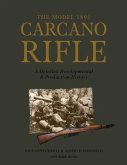Modern Exterior Ballistics is a comprehensive text covering the basic free flight dynamics of symmetric projectiles. The book provides a historical perspective of early developments in the 19th century, the technology leading to World War I and that through World War II into the modern post-war era. Historical topics include the first ballistic firing tables, early wind tunnel experiments, the development of free flight spark ranges and the first supercomputer, ENIAC, which was designed to compute artillery trajectories for the U.S. Army Ballistic Research Laboratory. The level of the text requires an undergraduate education in mathematics, physics, and mechanical or aerospace engineering. The basic principles of ballistic science are developed from a comprehensive definition of the aerodynamic forces that control the flight dynamics of symmetric projectiles. The author carefully starts with the basic vacuum point mass trajectory, adds the effects of drag, discusses the action of winds, simple flat fire approximations, Coriolis effects and concludes with the classic modified point mass trajectories. Included in the discussion are analytical methods, change of variables from time to distance, numerical solutions and a chapter on the Siacci Method. The Siacci Method provides a historical perspective for computing flat fire trajectories by simple quadrature and is used in the sporting arms industy. The final six chapters of the book present an extensive physical and mathematical analysis of the motion of symmetric projectiles. The linearized equations of angular and swerving motion are derived in detail. The effects of mass asymmetry, in-bore yaw, cross wind and launch in a slipstream are discussed. Special consideration is given to the derivation and explanation








